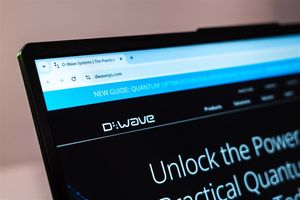Micropolis is what happens when robotics stops being science fiction and starts shaping the real world. You can feel it in the streets of Dubai, where the company’s machines move like extensions of the city itself. They don’t just patrol, they perceive. They don’t just respond, they anticipate.
It’s the kind of intelligence that rewrites what a smart city actually is, because Micropolis Holding Company (NYSE: MCRP) isn’t chasing automation for novelty. It’s architecting the next layer of urban consciousness, where infrastructure starts to think for itself and every movement has intention coded inside it. This isn’t robotics as spectacle; it’s robotics as self-awareness.
Headquartered in Dubai Production City and built from a region that doesn’t experiment with ambition, but institutionalizes it, Micropolis Holding Company (“Micropolis”) is changing an entire AI robotics landscape by designing and manufacturing autonomous mobile robots, control systems, and AI platforms for security, logistics, and industry. Here's the difference between MCRP and others.
Micropolis' technology doesn’t sit in lab tests or simulation rooms. It’s out on the streets, deployed with the Dubai Police, running in real time through Expo City, and trusted in zones where mistakes are not an option. That’s what separates engineering from imagination. Micropolis builds the kind of intelligence you can’t fake.
A Micropolis Ecosystem at Work
Best described, Micropolis has created an entire ecosystem around autonomy. The M-series platforms, including the M01 for open-road operations and the M02 for gated communities, represent the kind of versatility that allows machines to serve as both infrastructure and instrument. Every vehicle is designed around a modular chassis, where power storage, steering, and braking are controlled electronically. It’s not a robot with wheels; it’s a rethinking of motion itself.
Behind each model is a proprietary control system known as the Micropolis Robotic Control Unit, an energy-efficient command center that lets machines navigate complex terrain without compromise. That control isn’t imported, licensed, or borrowed. It’s built in-house by engineers who see autonomy not as software, but as philosophy.
What gives the company’s approach extra weight is that it understands the ecosystem of intelligence. Dubai Police didn’t just partner with Micropolis to experiment with smart patrols; they integrated them into civic infrastructure. The M1 and M2 autonomous patrol units don’t replace humans, they multiply them, extending awareness through surveillance, detection, and deterrence. When these machines roll through a neighborhood, they’re not just recording—they’re learning.
That is where the line between urban security and artificial cognition begins to blur. Micropolis has turned what used to be reactive public safety into proactive city intelligence, and it’s happening right now.
Partnerships are a Big Part of the Value Proposition
The partnerships are as telling as the products. Micropolis is part of NVIDIA’s Inception program, an accelerator for AI and robotics companies whose architectures are already credible at scale. The company also collaborates with Siemens for validation and verification systems, Velodyne for lidar integration, and Ouster for computer vision. Each relationship deepens Micropolis’ ability to fuse machine perception with mechanical precision. This isn’t a company waiting for the AI revolution to arrive—it’s co-authoring it.
Beyond Dubai, Micropolis is setting its sights on industrial automation, healthcare logistics, and consumer robotics, markets where the demand for functional mobility is climbing fast. Their business model isn’t dependent on a single sector. It’s a platform strategy designed to make autonomy adaptable, scalable, and financially repeatable. Every new robot, module, or control system becomes a revenue node in a growing network of machines that communicate, self-correct, and improve. That kind of feedback loop turns product innovation into compound growth. It’s what happens when robotics stops being a machine business and becomes a data business.
From a Solid Foundation, Micropolis Grows
The financials tell their own story. Micropolis went public in March 2025, raising $15.5 million at a time when robotics IPOs were almost extinct. Today, the company’s market cap is about $76 million, with an average daily trading volume of 337,000 shares. That doesn’t sound massive until you realize the scale of what they’re building.
Micropolis isn't a gadget company. They’re a city-scale automation provider with real deployments, patents in motion, and a pipeline of new partnerships spreading across the GCC. Most small-caps talk about vision. Micropolis already has one driving around in uniform.
Still, what makes this story powerful isn’t just the technology. It’s the proof. Micropolis doesn’t exist to theorize what robotics could be; it’s showing the world what robotics already is when built with purpose. The company’s machines are not hypothetical assistants or promotional stunts. They are physical extensions of human systems that can monitor, adapt, and evolve.
When you see one on patrol in Dubai, you’re looking at more than a robot. You’re seeing the start of a city that can manage itself, protect itself, and even learn from itself. That’s the moment when automation turns into something much bigger—when technology stops serving people and starts partnering with them. Micropolis didn’t wait for the future. It just made it mobile.
Disclaimer: This content reflects information available and believed to be accurate at the time of publication. Micropolis Holding, Corp. (NASDAQ: MCRP) and market data referenced are current as of the date of writing but subject to change without notice. This article is for informational purposes only and should not be construed as investment advice.
Additional Disclaimers and Disclosures
This presentation has been created and distributed by Hawk Point Media Group, LLC (“HPM”) and must be explicitly regarded as sponsored content. HPM has been compensated four thousand five hundred dollars from Shore Thing Media, Group, llc to produce this content as part of a broader digital marketing program scheduled between October 21, 2025 and October 30, 2025. This content may be reused, republished, or syndicated across multiple channels with permission and beyond those directly controlled by HPM, provided that this disclaimer and disclosure remain included in full with any reproduction or redistribution.
Because HPM has been compensated to produce this material, the views expressed herein should be considered biased. The compensation received creates a direct conflict of interest, and as a result, the content may emphasize favorable viewpoints, tone, or narratives regarding Micropolis Holding, Corp. Readers should assume that because HPM is paid for its work, this presentation generally highlights the positive aspects of the featured company while omitting, minimizing, or not fully addressing risks, challenges, or negative developments. This is a standard feature of sponsored content, and readers must keep that context in mind. HPM does not own stock in Micropolis Holding, Corp and will not be compensated with stock. Although HPM does not own shares, it is prudent to expect that those hiring HPM may sell some or all of their shares owned, if any, during the time of this digital production, which could pressure the stock price of Micropolis Holding, Corp.
This article, video, or related newsletters is for informational purposes only. It does not constitute investment advice, a recommendation, or an offer to buy or sell any security. Nothing in this presentation should be relied upon as the sole basis for making an investment decision. HPM strongly urges readers to perform their own independent due diligence, consult with licensed financial professionals, and fully consider the risks of investing in any company featured.
Investors should review publicly available filings made by the company with the U.S. Securities and Exchange Commission (SEC), including but not limited to Forms 10-K, 10-Q, 8-K, insider trading reports (Forms 3, 4, 5), and any Schedule 13D or other ownership disclosures, all of which can be accessed through www.sec.gov. These filings contain risk factors and financial details not necessarily included in sponsored content. Investing in publicly traded securities is inherently risky.Investors may lose part, most, or all of their investment. Markets are volatile, and small-cap and microcap securities carry heightened risks of illiquidity, volatility, and loss of capital. No statement in this presentation should be interpreted as a guarantee of future performance.
This disclaimer and disclosure must remain intact, visible, and unaltered by any individual, organization, or third-party syndicator reproducing, distributing, or republishing this content, whether or not HPM has direct knowledge of such reproduction. Removal or omission of this disclaimer constitutes a material misrepresentation of the content and its context.
Media Contact
Company Name: Hawk Point Media
Contact Person: Editorial Dept.
Email: info@hawkpointmedia.com
Country: United States
Website: https://hawkpointmedia.com/






